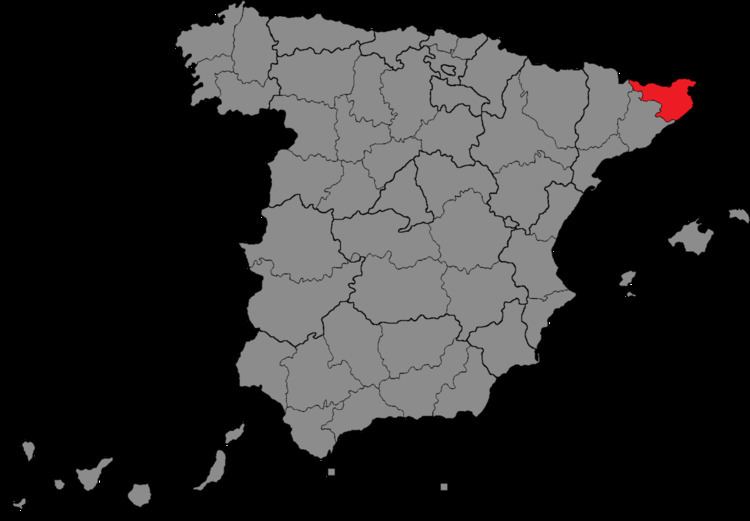Province Province of Girona Population 753,054 (2016) Major settlements Girona Major settlement Girona | Autonomous community Catalonia Electorate 512,366 (2016) Region Catalonia | |
 | ||
Seats 5 (1977–2000)
6 (2004–) Created Spanish general election, 1977 | ||
Girona (Spanish: Gerona) is one of the 52 electoral districts (Spanish: circunscripciones) used for the Congress of Deputies—the lower chamber of the Spanish Parliament, the Cortes Generales. The electoral system uses the D'Hondt method and a closed-list proportional representation, with a minimum threshold of 3%.
Contents
It is one of four electoral districts which correspond to the provinces of Catalonia. Girona is the largest municipality although it only has 60,000 voters out of the total electorate of 457,000. Figueres is the second largest municipality with 28,000 voters. There are no other municipalities with electorates over 25,000. The district has traditionally been one of the weakest for the national parties of the right, who, since 1982, have only won a seat on one occasion in the district. It was one of only two districts in the 2004 election (along with Lleida) where the People's Party (PP) failed to win a seat. With the PP gaining a seat in Lleida in 2008, Girona was the only district without PP representation in the 2008-2011 parliament. The PP regained their seat at the 2011 election, when they received their highest ever vote share.
The district has traditionally favoured the Convergence and Union coalition, although the Spanish Socialist Workers' Party (PSOE) topped the poll at the 2004 and 2008 elections.
Boundaries and electoral system
Under Article 68 of the Spanish constitution the boundaries must be the same as the province of Girona and under Article 140 this can only be altered with the approval of congress. Voting is on the basis of universal suffrage in a secret ballot. The electoral system used is closed list proportional representation with seats allocated using the D'Hondt method. Only lists which poll 3% of the total vote (which includes votes "en blanco" i.e. for none of the above) can be considered. Under article 12 of the constitution, the minimum voting age is 18.
Eligibility
Article 67.3 of the Spanish Constitution prohibits dual membership of the Cortes and regional assemblies, meaning that candidates must resign from Regional Assemblies if elected. Article 70 also makes active judges, magistrates, public defenders, serving military personnel, active police officers and members of constitutional and electoral tribunals ineligible.
Number of members
In the general elections from 1977 onwards Girona returned 5 members. That figure was increased to 6 members for the 2004 General Election.
Under Spanish electoral law, all provinces are entitled to a minimum of 2 seats with a remaining 248 seats apportioned according to population. These laws are laid out in detail in the 1985 electoral law. (Ley Orgánica del Régimen Electoral General) The practical effect of this law has been to over-represent smaller provinces at the expense of larger provinces. In 2004 for example Spain had 34,571,831 voters giving an average of 98,777 voters per deputy. In Girona however the number of voters per deputy was only 76,215.
